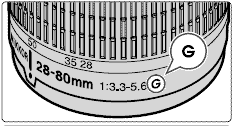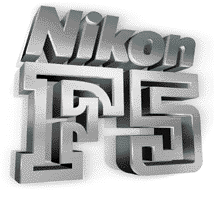 |
Introduced in Feb. 2001 during the PMA Show along with a few exciting Nikon bodies (Nikon D1X/H & Nikon FM3A). The Nikon SB-50DX AF-TTL Speedlight combines good features of compactness, lightweight and carries many functional features that makes it compatible with a wide range of Nikon camera models. The flash offers photographers enhanced flash shooting flexibility for a wide range of applications. The SB-50DX can synchronizes and fires flash light with another camera's built-in Speedlight for greater flash working range. It also offers various features that are not possible with built-in Speedlights, such as bounce Flash capability, close-up shooting, built-in wide flash adapter for l4mm wideangle coverage, TTL wireless slave flash, and the supplied Infrared Filter SW-91R enables you to use the SB-50DX as an infrared remote commander In addition, the SB-50DX fires Monitor Pre-flashes for 3D Multi-Sensor Balanced Fill-Flash for Nikon SLRs, including the Nikon D-series digital SLR cameras. |
Main features of the SB-50DX:
1) The SB-50DX is a high-performance Speedlight that can operate in combination with Nikon's built-in SLR speedlights in providing
increased power in flash photography. Having
a moderately powerful guide number of 22/72 (at 35mm zoom-head position, ISO 100,
m/ft., 20°C/68°F). Depending on the combination to the camera/lens used with
the SB-50DX, you can perform various types of TTL auto flash and Manual flash. When
used with Nikon digital SLR cameras, D-TTL auto flash exposure control can be performed.
2) Automatic power zoom continuously changes the zoom-head position from 24mm to
50mm according to the lens' focal length (incompatible with some lenses). The built-in
wide-flash adapter increases the angle of coverage to match a 14mm lens
3) Flash head tilts up to 90° or down to - 18°, enabling bounce-flash photography
or close-up photography (accommodates AF Nikkor
lenses engaged in close-up to a mere 11.8 inches)
4) When used with a camera
having a built-in Speedlight, both the SB-50DX and the camera’s built-in Speedlight
fire simultaneously for double-flash photography. A diffuser is provided to diffuse
light for bounce-flash photography with the double flash.
5) Wireless multiple flash photography is also possible with its Wireless Slave Flash with TTL Auto Control
6) The supplied Infrared Filter SW-9IR enables you to use the SB-50DX as an infrared
remote commander
7) For operation in dim light, an illuminator for the LCD panel is provided (p. 8)
and light condensing paint is applied to characters and symbols on the rear section.
Supplied accessories: Soft Case SS-50; Infrared Filter SW-9IR
Warning:- With newer series of Nikon Digital Stll SLR cameras that offer Nikon CLS (creative Lighting System), such as Nikon D70, the SB-80DX may perform differently, CliCK HERE to see the incompatibility of its features (@&#*@(@!!)
 |
 |
Main Reference Map / Nomenclature |
| 1. Flash head - Can be
tilted up to 90° or down to -18°. 2. Wide-flash adapter Attach the wide-flash adapter in front of the flash head to increase the angle of coverage to match a 14mm lens or to perform close-up flash photography. 3. AF-Assist Illuminator Automatically turns on for autofocus operation when the light is dim. 4. Diffuser Use to diffuse light from the camera’s built-in Speedlight when performing double-flash photography (bounce flash photography). 5. Operation button combination chart * Underexposure value * AF-Assist Illuminator cancel * Sound monitor off Operation button combination chart is under diffuser. 6. Camera contacts 7. Built-in Speedlight detecting lever Automatically detects the camera’s built-in Speedlight if it is used with the SB-50DX. 8. Light sensor Senses light from the master flash unit in wireless multiple flash operation. 9. Tilting angle scale 10. LCD panel 11. Ready-light Lights up when the SB-50DX is fully charged and ready to fire. Blinks after the SB-50DX fires at its maximum output in TTL/D-TTL auto flash mode, telling you that light may be insufficient. |
12. FLASH button Press
to test fire the flash or for Long time exposure 13. Illuminator/SLAVE button Press to turn on the LCD panel illuminator. Or hold it down for approx. 1 second to set wireless flash mode (only for wireless multiple flash). 14. ON/OFF button 15. "-" button Press to decrease values when setting flash output level compensation. 16."+" button Press to increase values when setting flash output level compensation. 17. MODE button Press to set the flash mode or type of TTL auto flash. 18. ZOOM button Press to adjust the SB-50DX zoom head position. 19. Lock lever 20. Battery chamber lid 21. Mounting foot 22. Lock plate 23. Infrared Filter SW-9IR Attach in front of the flash head to use the SB-50DX as an infrared remote commander |
Note: Light condensing paint is applied to the backside indications for clearer identification of the characters and symbols in dark conditions.
 |
Nikon SB-50DX Flash / speedlight compatibility chart with various Nikon cameras. |
LCD Panel Illustrations
| 1 Flash mode D: D-TTL auto flash |
2 Wide-flash adapter |
 |
7 Flash output level compensation |
About LCD panel Because of the directional characteristics of the liquid crystal, the LCD is difficult to read when viewed diagonally from above; however, the display can be seen clearly from a somewhat lower angle. The LCD panel display tends to be darker at high temperatures (approx. 60°C/140°F). When the temperature returns to normal (20°C/68°F), the display also returns to normal. The LCD’s response time tends to slow down at low temperatures (approx. 5°C/41°F and below). When the temperature returns to normal (20°C/68°F), response time also returns to normal.
Compatible Lenses: Types of CPU Nikkor lenses and non-CPU Nikkor lenses
| CPU Nikkor lenses | G-type AF Nikkor D-type AF Nikkor Non-G/D-type AF Nikkor lenses (except for AF Nikkor for F3AF) AI-P Nikkor |
|
| Non-CPU Nikkor lenses | AI-S Nikkor AI Nikkor Series E |
 |
 |
 |
CPU lenses - CPU lens has CPU
contacts.
G-type AF Nikkor lenses • The G-type Nikkor lens does not include an aperture
ring. The lens sends the distance information to the camera body. With some camera
bodies, the usable exposure mode is limited (see the lens’ instruction manual).
D-type AF Nikkor lenses • The lens sends the distance information to the camera
body. (See the lens’ instruction manual).
Battery Issue: The SB-50DX uses
two CR123A lithium batteries. Llithium cellss are more expensive and not as convenient
to locate as with others like alkalines.But the Lithium recycles the unit in less
than 4 sec. and has a better cold resistant characteristic.
Camera Model(s) Compatible
with TTL/D-TTL Auto Flash Mode
 |
Notes |
 |
Manual Flash |
 |
Note: Camera’s exposure mode in Manual flash mode The aperture must be manually selected in Manual flash mode. In exposure modes other than Aperture-Priority Auto and Manual, the shutter in some cameras may not be released. |
Relative:
Nikon AF-TTL Speedlight Models: Nikon SB-800 | Nikon SB-600 | Nikon SB-30 | Nikon SB-29(s) (2000) | Nikon SB-28 (1997) | Nikon SB-27 (1997) | Nikon SB-26 (1994) | Nikon SB-25 (1992) | Nikon SB-24 (1988) | SB-23 | SB-22 (1987) | SB-20 (1986)
Nikon AF-TTL Speedlight DX-Series: Nikon SB-28DX (1999)| SB-50DX (2001) | SB-80DX (2002)
Additional information on various Nikon MF Bulb Flash - Nikon MF-Speedlights SB-1 ~ SB-21A/B
| Back | Main Index Page - Nikon F5 Professional SLR camera
The Camera - Background,
Issues & Summary
Basic
Features | Focusing | Metering Systems | Exposure Control | Reliability Issues | Nikkor lens Compatibility
Prisms/Finders - Index page
- 2 parts
Film Backs: Index
Page - 1 parts
Focusing Screens - Index Page
- 1 part
Flash System - Index
Page
- 3 parts
System Accessories: | Power Sources | Cases | Remote
Control | Miscellaneous
Macro
Photography
- Related info on Micro-Nikkor lenses
Technical Specification for Nikon F5
Main
Reference Map
/ Nomenclature
Resource Centre:
Instruction Manuals
Nikon
F5 Camera Body
- 18
parts
MF-28
Multi-Function Back
HTML - 8
parts
PC
Links - Photo Secretary
- 2
parts
AF-TTL Speedlights:
SB-28 / SB28DX | SB29(s) info | SB30 | SB50DX | SB80DX | SB600 info | SB800
Variants: F5 50th Anniversary Model | Nikon/Kodak DCS-620 | DCS-720 Digital Still SLR camera
| Back | Index Page of Digital
Nikon SLR cameras
|
Back | Main Index Page of Pictorial
History of Nikon SLR cameras
![]()
| Nikon F | Nikon F2 | Nikon F3 | Nikon F4 | Nikon F5 | Nikon F6 | Nikkormat / Nikomat | Nikon FM | Nikon FE/ FA | Nikon EM/FG/FG20 | Nikon Digital SLRs | Nikon - Other models |
The Eyes of Nikon:-
Nikon Auto Focus Nikkor lenses:- Main
Index Page
Nikon Manual Focus Nikkor lenses:- Fisheye-Nikkor Lenses - Circular | Full Frame |
Ultrawides Lenses - 13mm15mm18mm20mm | Wideangle Lenses - 24mm28mm35mm | Standard Lenses - 45mm 50mm 58mm | Telephoto
Lenses - 85mm105mm135mm180mm & 200mm | Super-Telephoto Lenses - 300mm 400mm 500mm 600mm 800mm 1200mm |
 Index Page |
Special
Application lenses: Micro-Nikkor Lenses - 50mm~55mm -60mm 85mm -105mm 200mm Micro-Zoom 70-180mm Perspective Control (PC) - 28mm 35mm PC-Micro 85mm Dedicated Lenses for Nikon F3AF: AF 80mm f/2.8 | AF 200mm f/3.5 EDIF Depth of Field Control (DC): 105mm 135mm Medical Nikkor: 120mm 200mm Reflex-Nikkor Lenses - 500mm 1000mm 2000mm Others: Noct Nikkor | OP-Nikkor | UV Nikkor 55mm 105mm | Focusing Units | Bellows-Nikkor 105mm 135mm Nikon Series E Lenses: 28mm35mm50mm100mm135mm | E-Series Zoom lenses: 36~72mm75~150mm70~210mm |
MF Zoom-Nikkor Lenses: 25~50mm | 28~45mm | 28~50mm | 28~85mm | 35~70mm | 36~72mm E | 35~85mm | 35~105mm | 35~135mm | 35~200mm | 43~86mm | 50~135mm | 50~300mm | 70~210mm E | 75~150mm E | 80~200mm | 85~250mm | 100~300mm | 180~600mm | 200~400mm | 200~600mm | 360~1200mm | 1200~1700mm
Tele-Converters: TC-1 | TC-2 | TC-200 | TC-201 | TC-300 | TC-301 | TC-14 | TC-14A | TC-14B | TC-14C | TC-14E | TC-16 | TC-16A | TC-20E
Recommended links to understand more technical details
related to the Nikkor F-mount and production Serial Number:
http://rick_oleson.tripod.com/index-153.html by: my
friend, Rick Oleson
http://www.zi.ku.dk/personal/lhhansen/photo/fmount.htm by: Hansen,
Lars Holst
http://www.mir.com.my/rb/photography/hardwares/nikonfmount/lens2.htm
http://www.photosynthesis.co.nz/nikon/serialno.html
 |
| Message Board | for Nikon F5 Series SLR model(s) | |
About this photographic site.
HOME - Photography in Malaysia |
![]()
A resource dedicated to my kids, Alvin Foo & Esther Foo- one day,
BOTH might need to use all these information for his/her Nikon F5A camera.
Volunteered Maintainer(s) for the Nikon F5 Message Board: Tony Davies-Patrick, UK; Rick Oleson, US; Koh Kho King, Malaysia.
Credit: Mr. Chuck Hester, US for his text re-editing skill for this site; Our staff, HowKiat® who created the 3D-Nikon F5 logo. Mr. Lew Chee Wai of YL camera for lending his F5 for me to take some shots appeared in this site. All those nice folks who have contributed their images, in particular Mr. Mike Long, Edwin leong, Palmi Einarsson, Sergio Pessolano, Fred Kamphues, Harry Eggens, Curtis Forrester, Nick (Natures Moments), Sandra Bartocha; fellow countrymen, Vincent Thian, Koh Kho King, Philip Chong, CY Leow etc. and contributions from a few nice folks from Photo Malaysia Forum. Disclaimers & acknowledgments: Certain content and images appeared in this site were either scanned from official marketing leaflets, brochures published by Nikon and/or contribution from surfers who claimed originality of their own work for public publishing in this website, where majority of the extracted information are used basing on educational merits. The creator of this site will not be responsible for any discrepancies that may arise from any possible dispute except rectifying them after verification from respective source. Neither Nikon or its associates has granted any permission(s) in using their public information nor has any interest in the creation of this site. "Nikon", "Nikkormat", "Nippon Kokagu KK" "Silent Wave", "Focus Tracking Lock-on", "Nikkor" & other applicable technical/business terms are registered trade name(s) of Nikon Corporation Inc., Japan. Site made with an Apple G5 IMac.
